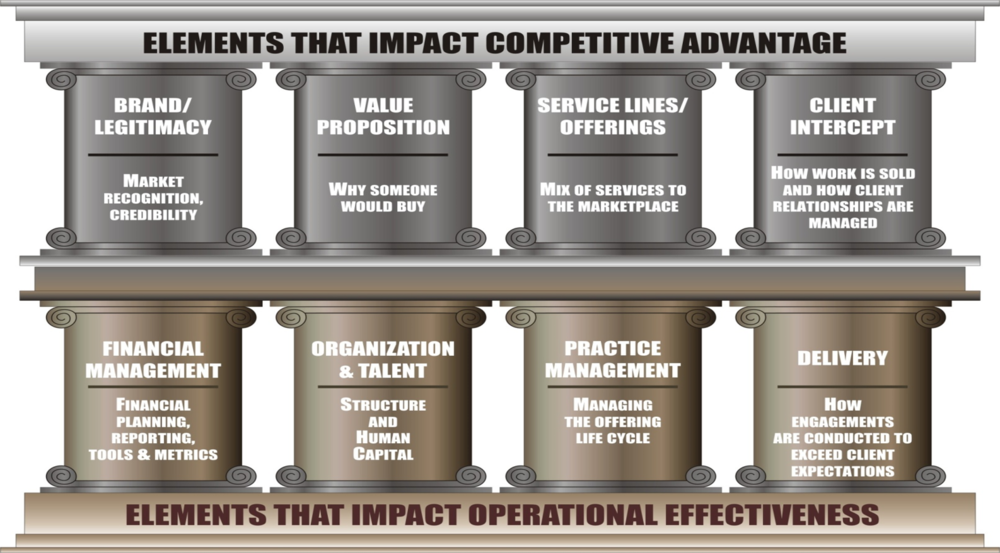Most B2B companies strive to build an intimate and trusted relationship with their customers, at least that’s what they say they want. They expend a lot of energy educating their sales professionals to work in that space thinking that this is the area most in need of help. After dedicating considerable resources and time on sales training, most find that it’s unfortunately not the panacea they hoped it would be.
Customer Intimacy is a business model change, not simply a series of training session for customer-facing employees.

As the diagram shows us, customer intimacy business model re-invention is more than just a sales approach. It is literally a new way of thinking and executing work. Let’s save that discussion for another post. For now, I’d like us to examine the plight of the sales organization.
How does your sales organization meet the challenge? How does your customer relationship become an intimate one?
Often, we find that a major stumbling block is that the “solutions” the sales organization take into customer discussions arein fact little more than a bundling of products – which tend to emanate from a single product family, business unit, or process.
True, they may make a larger sales – but the customer does not engage in a meaningful way.
At other times, we see companies selling the “solution pricing” premise, that is, “buy this bundle of stuff and get better pricing.” Finally, we sometimes see an effort to refocus the discussion around the products as a driver of savings – this approach will be of some interest to the customer, but it does not differentiate your offerings from the competition. In fact, it can spiral into destructive price warfare.
All these and many other approaches are tried every day and then foisted upon the sales organization with little more than sales training, which, let’s face it, does not change the central problem – are you really solving your customer’s most strategic problems?
Your customer executive still does not engage, and your solution pitch is still viewed as just another sales pitch.
After literally over a thousand discussions with key executives, I can state that they are tired of this approach and don’t want to solve your problem: finding out what’s important to them so you can pitch your products to that issue or topic.
So what does work? Equipping your sales talent with True Solutions – that is to say, accept that you must create and offer things that create a true partnership.
You must develop a portfolio of intimacy driving things that the executive truly cares about – for example, hospital executives are more interested in patient safety than the name on the MRI; food and beverage companies are more interested in getting new product ideas and out in the market, then what copier is used. This does not mean that your current products don’t need to be sold. But, if you want an executive to sit up and take notice, you must equip them with the right True Solutions™.
I know this sounds impossible (you ask: how can we have anything to offer that would fit the bill?) and its sounds impractical (how does this sell my products?). In answer to both questions, I hope you have been reading this blog and are gaining an understanding of the power of the True Intimacy Model™. But let’s be logical for a second; if the customer executive wants to meet more often with your team because they are truly helping they will be more sympathetic to your products and services. Also, many times a section of the portfolio can directly pull through products and build intimacy. My empathy is always with the people on the front lines – those actually helping your customers.
We need to accept that it is asking a lot of sales people alone to carry the weight of building those key relationships. In addition to the right solutions they need a support organization that can come into an account with the type of vertical expertise and specific solution knowledge to convince the customer that your are for real and can/will implement appropriately. Building the right kind of expert consultancy internally is crucial. That is no easy task, but it can and must be done. These experts will have experience talking “straight” to executives and holding their own when tough information must be delivered.
Finally, “solution selling” by itself is not enough to equip the sales talent to be successful in this new and different landscape. We must equip them to leverage the power of Ideas and consultative help available through team selling. This is a large conceptual change but once they are doing it – almost all can become proficient in this type of leverage – they can go to any executive with confidence that they will be well received and well thought of.
In summary, the notion that solution sales training will get us into an intimate executive relationship where we are providing that proverbial “trusted-advisor” impact is just not true.
We need to equip ourselves in a much more serious manner – and it’s worth it because owning the customer’s mind share always leads to wallet share.
These include:
- True Solutions – ones that meet the executives needs not yours,
- Consultative Support – people that can dominate the intellectual issues of the industry and the solution in a “doctor-patient” relationship
- Training on how to master idea-driven relationships, and
- Leveraging a team selling environment.
